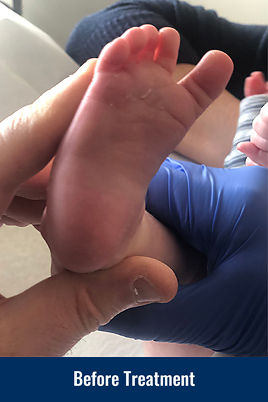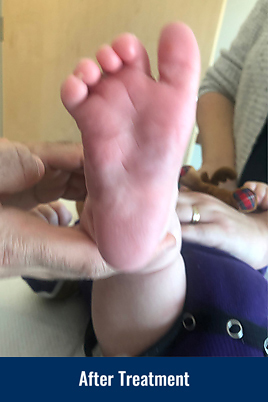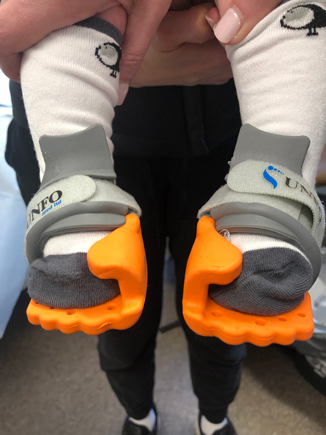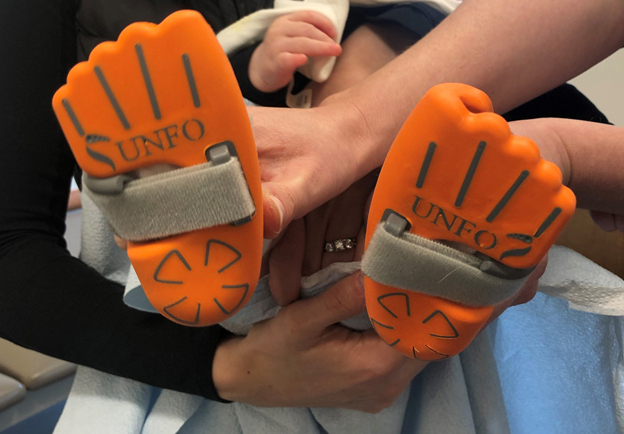Metatarsus Adductus
What is metatarsus adductus?
Metatarsus adductus is a deformity of the foot where the front half of the foot turns inward. This only involves the middle and the front of the foot, often appearing as if the child is “pigeon-toed” with the toes pointing inward instead of straight ahead. The foot may look bean-shaped or C-shaped with a convex outer border. A child’s feet may be very flexible or rigid in this condition due to soft tissues contracting around the joints.
What causes metatarsus adductus?
The definitive cause of metatarsus adductus is unknown, however the positioning of the fetus in the mother’s womb is considered to play a role as the condition occurs more frequently in twin births and in first-born children. Genetics or family history is also considered to be a factor.
How common is metatarsus adductus?
Metatarsus adductus occurs in 5-7% of live births, with an estimated global yearly incidence of 6.8 million patients. If a sibling has metatarsus adductus, the incidence of condition increases to 12%. Of children born with the condition, 65% suffer from the condition on both feet.
How is metatarsus adductus diagnosed?
Clinical examination of a patient with the described curved or C-shaped foot by a specialist is required for diagnosis. The use of X-ray is infrequently required, but depending on the child’s age, it may be required for treatment planning. A child with metatarsus adductus will require a comprehensive medical review to evaluate the total patient’s needs.
What are the treatment options for metatarsus adductus?
The treatment course of metatarsus adductus varies greatly by age, the maturity of the development of the bones as well as the severity of the condition. Additionally, if the foot is easily moved (flexible) versus more rigid, this will also change the treatment course. Metatarsus adductus may not require treatment, however it should be evaluated by a specialist to determine this, as earlier treatment is more successful. Due to the variation in treatment, the clinical examination and physician experience will determine the most appropriate treatment course.
If treatment is determined to be necessary, conservative treatment options may include:
- stretching completed by a child’s parents,
- splinting
- serial casting
- sitting and sleeping position modification
- bracing and footwear/orthotics.
The International Center for Limb Lengthening physicians may also utilize the UNFO (Universal Neonatal Foot Orthotic) bracing system that offers treatment for metatarsus adductus and reduces the possible need for serial casting. For more information on the UNFO bracing system, please visit the manufacturer’s website at https://unfo-med.com.
Surgical intervention for straightening the foot is seldomly required. It is not often considered until failure of conservative care and residual deformity would affect the patient’s ability to function on a daily basis.
Why choose the International Center for Limb Lengthening for treatment of metatarsus adductus?
The International Center for Limb Lengthening is world-renowned for its expertise in pediatric foot deformity correction. Your doctor will take the time to make sure you understand all your options and then will customize the treatment to meet your child’s specific needs. Our patients benefit from our team-centered approach with world-renowned orthopedic surgeons and specialized physician assistants, nurses and physical therapists. We help patients with metatarsus adductus achieve their best possible result.





